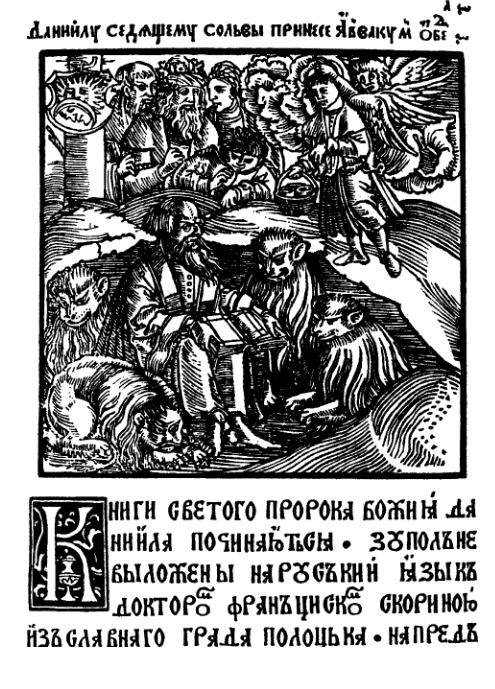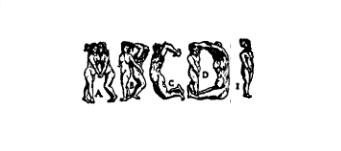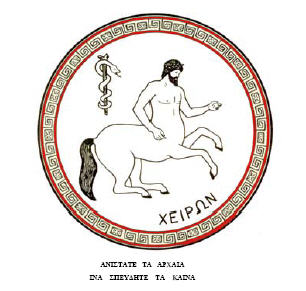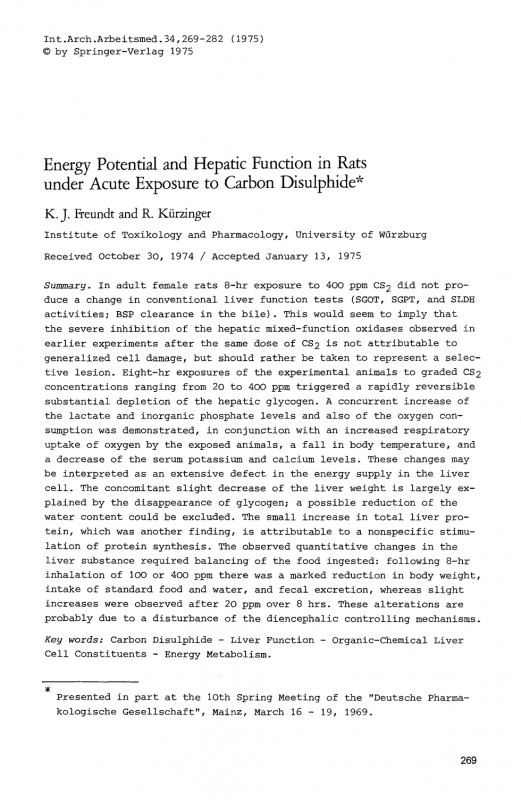Draft 1 in a new hypothesis: the etiology of schizophrenia, part 1.
Hypothesis: The Etiology of Schizophrenia 1
Carbon Disulfide – CS2 Intro
Carbon Disulfide & metabolites Chelating effects
on various essential trace metals
Carbon disulfide reacts with the amino groups of amino acids and proteins to form thiocarbamate in blood and tissues (1) thiocarbamates, possessing sulfhydryl groups, may chelate polyvalent inorganic ions. CS2 reacts with endogenous amines to form dithiocarbamates.(2) which could be metabolised back to CS2. An implication is the formation of acid labile CS2 (AL CS2) will continue to increase, even at steady-state concentrations of CS2,as long as free CS2 is available to the tissue and adequate amine substrates are available. (2) An additional important finding was the slow elimination of AL CS2, suggesting that AL CS2may accumulate in the body after repeated exposure to CS2. (2) Dithiocarbamates are capable of chelating several polyvalent inorganic ions such as copper and zinc, and thus may inactivate numerous enzymes in which these ions are essential for activity. (3)
The hypothesis of a chelating effect has been supported by the results of some studies (4), Andreva who reported an increase in zinc and copper excretion in exposed rats, and Lukas et al. (5), who found increased copper levels in the peripheral nervous tissue of exposed rats.
Copper and zinc ions are essential for the prosthetic groups of many enzymes. The neurotoxic action of carbon disulfide and its interference with the activity of many enzymes could partly be explained by chelating effects. Zinc is required for the activity of enzymes such as lactic acid dehydrogenase a, carbonic anhydrase, glutamate dehydrogenase, and alcohol dehydrogenase. Copper, represents a cofactor of pyridoxol, a form of vitamin B6. Copper is required for the proper functioning of enzymes such as cytochrome c oxidase, the coenzyme A dehydrogenase system, and dopamine ß hydroxylase. The loss of copper from the spinal cord is accompanied by cellular damage, producing tissue degeneration. Disturbances of the central and peripheral nervous systems, resulting from carbon disulfide exposure, could be connected with the loss of copper due to chelation and consequent inhibitory effects on enzyme systems (6)
LOX, Lysyl oxidase is copperdependent. The LOX activity are essential for the mechanical stability of the fibers and other supramolecular assemblies formed by these proteins and the elasticity of elastin. Because collagens and elastin are important components of the extracellular matrix, abnormalities in their modification can be expected to affect many tissues, as seen in lathyrism, a connective tissue disorder caused by the administration of ß-aminopropionitrile, an irreversible inhibitor of lysyl oxidases. (7)
Extracellular copper enzymes initiate the formation of the lysine and hydroxylysine derived crosslinks in collagens and lysine-derived crosslinks in elastin. (8) CS2-mediated protein cross-linking occurs in vivo through the generation of Lys-Lys thiourea and that diethyldithiocarbamate can, through in vivo release of CS2, produce the same cross-linking structure. This observation supports the utility of cross-linking of peripheral proteins as a specific dosimeter of internal exposure for CS2 and provides a mechanistic explanation to account for the high-molecular-weight neurofilament protein species isolated from rats exposed to CS2 or N, N-diethyldithiocarbamate. (9)
Hight levels of homocysteine will irreversibly ihnibit LOX. (10) One study suggest that LDL downregulation of LOX could contribute to the endothelial dysfunction caused by hypercholesterolemia, thus contributing to atherosclerotic plaque formation. (11)
(1)
Madlo, Z. and Soucek, B., Absorption, metabolism, and action of carbon disulfide in the organism.
VII. Inhibition of serum cholinesterase by carbon disulfide, Prac. Lek., 6, 312, 1953
Soucek, B. and Madlo, Z., Absorption metabolism, and action of carbon disulfide in the organism. VIII.
(2)
McKenna, M. J. and DiStefano, V., Carbon disulfide. I. The metabolism of inhaled carbon disulfide in
the rat, J. Pharmacol. Exp. Ther., 202(2), 245, 1977
Reaction of carbon disulfide with blood in vitro, Prac. Lek., 6, 11, 1954.
(3)
Brieger, H., Carbon disulfide in the living organism-retention, biotransformation and pathophysio-
logic effects, in Toxicology of Carbon Disulfide, Brieger, H., Ed., Excerpta Medica Foundation,
Amsterdam, 27, 1967.
(4)
Gadaskina, I. D. and Andreeva, N. B., Biochemical shifts occurring in the organism following carbon
disulfide poisoning (free SH groups and blood ceruloplasmin; copper and zinc metabolism), Gig. Tr. Prof.
Zabol.. 13, 28, 1969.
(5)
Kotas, P., Obrusnik, I., Lukas, E., and Krivanek, M., Determination of zinc and copper in the periphera
nerves of rats with carbon disulfide-induced neuropathy, J. Radioanal. Chem., 19(2), 263, 1974.
(6)
(Scheel, 1967). ISBN 92 4 154070 2, World Health Organization 1979
COHEN AE, SCHEEL LD, KOPP JF, STOCKELL FR, Jr, KEENAN RG, MOUNTAIN JT, PAULUS HJ. Biochemical mechanisms in chronic carbon disulfide poisoning. Am Ind Hyg Assoc J. 1959 Aug;20(4):303–323.
(7)
Wilmarth KR, Froines JR (November 1992). ”In vitro and in vivo inhibition of lysyl oxidase by aminopropionitriles”. J Toxicol Environ Health 37 (3): 411–23. PMID 1359158
(8)
Csiszar K. Lysyl oxidases: a novel multifunctional amine oxidase family. Prog Nucleic Acid Res Mol Biol. 2001; 70: 1–32.
(9)
Chem Res Toxicol. 1998 May;11(5):544-9.
Carbon disulfide and N,N-diethyldithiocarbamate generate thiourea cross-links on erythrocyte spectrin in vivo.
Erve JC, Amarnath V, Graham DG, Sills RC, Morgan AL, Valentine WM.
(10)
Volume 272, Number 51, Issue of December 19, 1997 pp. 32370-32377
Irreversible Inhibition of Lysyl Oxidase by Homocysteine Thiolactone and Its Selenium and Oxygen Analogues
Implications for Homocystinuria
(11)
Arteriosclerosis, Thrombosis, and Vascular Biology. 2002;22:1409-1414
Low Density Lipoproteins Downregulate Lysyl Oxidase in Vascular Endothelial Cells and the Arterial Wall Cristina Rodríguez ; Berta Raposo ; José Martínez-González ; Laura Casaní ; and Lina Badimon
Enzyme inhibition
Dopamin:The copper-requiring enzyme dopamine b- hydroxylase decreased in response to increased exposure to CS2 (12)
Tryptophan: Significant alterations of the metabolism in rats. Exposure to carbon disulfide can cause a significant increase in the activities of kynureninase and kynurenine-2-oxoglutarate aminotransferase in the kidneys, but only a slight increase in their activities in the liver. (13) changes in the tryptophan metabolism, manifested by increased excretion of xanthurenic acid in human (14)
Disturbance of the B-vitamin metabolism
Exposure to carbon bisulfide results in an increased turnover of the B-vitamin complex (15, 16, 17, 18, 19) CS2 induced elevated serum lipid levels and accelerated cholesterol synthesis ( on rat, 176 ppm, inh) are reportedly blocked by feeding nicotinic acid at a dose of 40 mg/kg/da (20) Nicotinic acid has protective effects against CS2 poisoning. CS2 reduces the levels of Nicotinic Acid. (21 22 23 24 25)
Ca2+ UCP, peroxidation
The acute toxicity of organic toxicants like Carbon Disulfide has been linked to altered Ca2+ homeostasis through several mechanisms. (26 – 29)
Exposure of hepatocytes to halocarbons or carbon disulfide results in the rapid loss of Ca2′-ATPase activity and the ability of the endoplasmic reticulum to sequester Ca2 (30 -32)Maintenance of normal [Ca2+]i homeostasis is also dependent upon the status of other cell constituents, including sulfhydryl, glutathione, and nicotinamide-nucleotide redox levels of the cytoplasm and mitochondria. (33)
Chronic CS2 exposure resulted in inhibition of respiration and cytochrome oxidase activity in rat brain. Acute exposure showed partial uncoupling of the oxidative phosphorylation in rat brain. There was also a decrease of ATPase activity in rat brain. (34)
Oxidation stress also resulted in Ca(2+) concentrations and calmodulin (CaM) levels increases in cerebral cortex, hippocampus and spinal cord. Thus, CS(2) intoxication was associated with elevation of lipid peroxidation (LPO) and reduction of antioxidant status. It was suggested that ROS and concomitant LPO, at least in part, were involved in CS(2)-induced neuropathy. (35)
12
McKenna, M. J. and DiStefano, V., Carbon disulfide. 11. A proposed mechanism for the action of
carbon disulfide on dopamine B-hydroxylase, J. Pharmacol. Exp. Ther., 202(2), 253, 1977.
13
Med Lav. 1972 Mar-Apr;63(3):126-33.Links
Excretion of some tryptophan metabolites in man exposed to carbon disulphide.
Tintera J, Graovac-Leposavic L, Milic S.
14
Toxicol Appl Pharmacol. 1988 Jul;94(3):356-61.
Enzymatic studies on tryptophan metabolism disorder in rats chronically exposed to carbon disulfide.
Okayama A, Ogawa Y, Goto S, Yamatodani A, Wada H, Okuno E, Takikawa O, Kido R.
15
Lefaux, R. 1968. Carbon disulphide. Pp. 117-119 in Practical Toxicology of Plastics. Cleveland, OH: Chemical Rubber Company
16
Gorny, R., Carbon disulfide-induced vitamin 96 deficiency in rats fed diets with different vitamin B6
contents, Bromarol. Chem. Toksykol., 13(3), 299, 1980.
17
Washuettl, J., Winker, N., and Steiner, I.,The effects of carbon disulfide on the vitamin BI content in the serum
of exposed workers, Munch. Med. Wochenschr., 121(24), 819, 1979.
19
165. Miyagawa, K., Carbon disulfide poisoning – Effects of L-methionine and L-methionine combined
with vitamin B12 on carbon disulfide poisoning, Shikoku Acra Med., 6(3), I, 1955.
20
Wronska-Nofer,. T., Nofer, J., and Stanislaw, T., Disorders in excretion of niacin metabolites in carbon
disulfide-poisoned animals, Med. Pr., 16, 77, 1965.
21
Wronska-Nofer, T., The influence of low doses of nicotinic acid upon the development of lipid
disturbances in rats chronically exposed to carbon disulphide, hi. Arch. Arbeitsmed., 29(4),
285, 1972.
22
Knobloch, K., Effect of nicotinamide on excitability of the vestibular nerve and some motor nerves in chronic
carbon disulfide poisoning in guinea pigs, Med. Pr., 12, 355, 1961.
23
Kuljak, S. and Stern, P., Protective effect of glutathione and xanthinol nicotinate against carbon disulfide
poisoning in the mouse, Arh. Hig. Rada Toksikol., 22(2), 137, 1971.
24
Paine, A. J., Williams, L., and Legg, R. F., Apparent maintenance of cytochrome P450 by nicotinamides in
primary cultures of rat hepatocytes, Life Sci., 24, 2185, 1979.
25
Silvestroni, A. and Rimiani, R., Microcirculation in chronic experimental intoxication with carbon disulfide.
Effects of nicotinic acid, Folia Med., 53, 1, 1970.
26. Trump, B. F., and Berezesky, I. K. Calcium regulation and cel injury: a heuristic hypothesis. Ann N.Y. Acad. Sci. 494 280-292 (1987).
27. Hyslop, P. A., Hinshaw, D. B., Schraufstatter, I. U., Sklar, L A., and Cochrane, C. G. Intracellular calcium homeostasis during hydrogen peroxide injury to cultured P388D1 cells. J. Cell Physiol. 129: 356-366 (1986).
28. Starke, P. E., Hoek, J. B., and Farber, J. L. Calcium-dependent and calcium-independent mechanisms of irreversible cell injury in cultured hepatocytes. J. Biol. Chem. 261: 3006-301(1986).
29. Cheung, J. Y., Bonventre, J. V., Malis, C. D., and Leaf, A Calcium and ischemic injury. New England J. Med. 314 1670-1676 (1986).
30. Brattin, W. J., Pencil, S. D., Waller, R. L., Glende, E. A., and Recknagel, J.O. Assessment of the role of calcium ion in halo carbon hepatotoxicity. Environ. Health Perspect. 57: 321-32
31. Moore, L., Davenport, G. R., and Landon, E. J. Calcium uptake of a rat liver microsomal subcellular fraction in response to in vivo administration of carbon tetrachloride. J. Biol. Chem. 251: 1197-2101 (1976).
32. Recknagel, R. 0. A new direction in the study of CCl4 hepatotoxicity. Life Sci. 33: 401-408 (1983).
33 Orrenius, S., Thor, H., and Bellomo, G. Alterations in thiol and calcium-ion homeostasis during hydroperoxide and drug metabolism in hepatocytes. Biochem. Soc. Trans. 12: 23-28. (1984).
34 Journal of Ncurochcmistru. 1971, Vol. 18, pp. 177 to 182. Pergamon Press. Printed in Northern Ireland
Oxidation and phosphorylation processes in brain mithochondria of rats exposed to carbon disulfide.
S. Tarkowski Hanna Sobczak
35 Ca2+ Calmodulin levels was increased in cerebral cortex, hippocampus and spinal cord. Volume 179, Issues 2-3, 15 May 2009, Pages 110-117 Changes of lipid peroxidation in carbon disulfide-treated rat nerve tissues and serumDa-Qing Suna, b Ai-Wu Lic, , Ju Lid, Dian-Guo Lib, Yi-Xin Lib, Hao-Fengb and Ming-Zhi Gongb, Chemico-Biological Interactions.
Cancer and p53
The p53 gene has been proposed as tumour suppressor and a candidate susceptibility gene in schizophrenia. (36) it is just a coincidence that the results of one study indicate that occupational exposure results in a significant increase in P53 CGT>CTT transversions. (37) identified occupational exposure in combination with smoking as a significant risk factor for the mutation. It was concluded that AS-PCR of the P53 273rd codon transversions is a suitable technique for studying the effects of occupational exposure to CS2.
36
Schizophr Res. 2000 Feb 14;41(3):405-15
Apoptosis and schizophrenia: is the tumour suppressor gene, p53, a candidate susceptibility gene?
Catts VS, Catts SV.
Schizophrenia Research Unit, South Western Sydney Area Health Service, Liverpool Hospital, Liverpool, NSW, Australia.
37
Int J Hyg Environ Health. 2007 Jan;210(1):69-77. Epub 2006 Sep 1.
Use of genotypic selection to detect P53 codon 273 CGT>CTT transversion: application to an occupationally exposed population.
Carton T, Tan XD, Hartemann P, Joyeux M.
–
Continues:
Hypo thesis: The Etiology of Schizophrenia II
Hypo Thesis: The Etiology of Schizophrenia III
 Evangeliet sprids på ett sätt som inte liknar något annat – CAC – det finns bara en bak.
Evangeliet sprids på ett sätt som inte liknar något annat – CAC – det finns bara en bak.




